HomeHardwareFeaturesDragon’s Dogma 2
Dragon’s Dogma 2 PC performance issues are a draggin’ slogTweaking settings only goes so far
Tweaking settings only goes so far
Image credit:Rock Paper Shotgun/Capcom
Image credit:Rock Paper Shotgun/Capcom
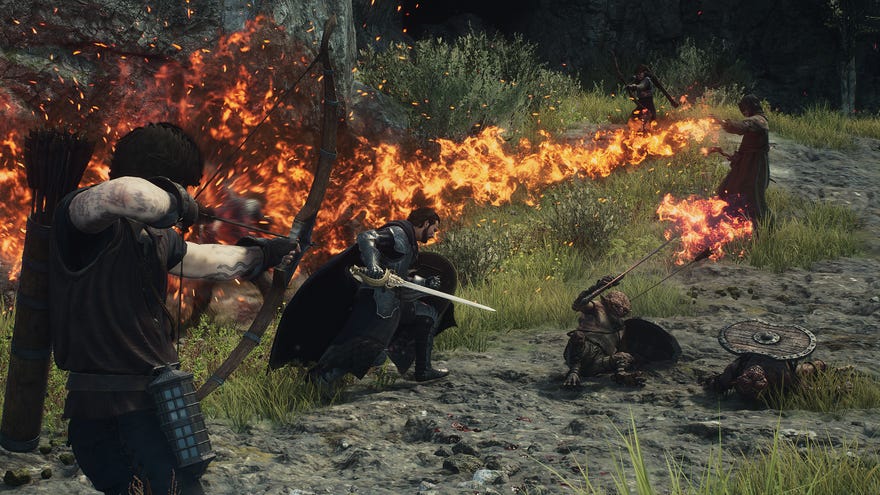
Dragon’s Dogma 2is anRPGof manyadmirable qualities. I’m especially attached to my Arisen’s current pair of Pawns, one of whom speaks with the wonderfully stretched intonations of a pitch-shifted Matt Berry. Sadly, none of its achievements pertain totechnicalfidelity. While decent-looking, Dragon’s Dogma 2 takes some serious hardware to maintain consistently smooth performance, with lowered quality settings lending only the most limp-wristed of helping hands.
DLSSandFSR 3upscaling are more effective, but this is one game where powering through the worst of its stuttering and framerate drops will take more than a muscleboundgraphics card. Not for the first time with an RE Engine game, Dragon’s Dogma 2 appears severely CPU-limited, so it really does demand a fully-upgraded rig to ward off sluggishness – especially at higher resolutions.
Improving performance isn’t a completely hopeless endeavour, but besides the FPS wobbles, there are some settings oddities that need navigating as well. I’ll cover all that and more in this guide; even if we can’t fix Dragon’s Dogma 2 ourselves, at least we can better understand its strangeness.
Image credit:Rock Paper Shotgun/Capcom
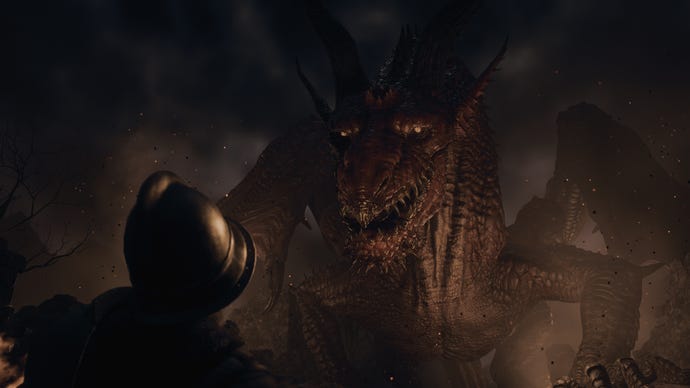
Dragon’s Dogma 2 system requirements and PC performance
The first sign of potential rough waters comes in the minimum specs, which are relatively high for simple 1080p. Unusually, the recommended specs then make an enormous jump up to targeting 4K, leaving fast 1080p and 1440p without much guidance. The lack of storage info is also a tad odd, though I can report that Dragon’s Dogma 2 is currently taking up a reasonable 60.53GB on mySSD.
Dragon’s Dogma 2 minimum PC specs
Dragon’s Dogma 2 recommended PC specs
Capcom might warn of FPS drops in advance, but that doesn’t make them any less frequent or acute. Only while wondering the wilds does Dragon’s Dogma 2 appear to run fine – once you enter any town, city, or even a particularly busy camp, a PC that was comfortably pulling 60-80fps can lurch down to 30-40fps, with momentary dips even below that.
Switching to newer, faster GPUs produced more causes for concern. The current-genRTX 4060could only average 47fps at 1080p with the High preset, and dropping to Low only bumped that up to 49fps. TheRTX 3070also revealed a weird lack of difference between minimum and maximum settings: at 1440p with the High preset, ray tracing enabled, and DLSS on Quality, it averaged 40fps, only 6fps slower than with the Low preset and ray tracing off (though with DLSS Quality still running).
Image credit:Rock Paper Shotgun/Capcom

There was also a startling lack of variance between higher-end GPUs. At 4K, with the High preset, ray tracing on, and DLSS on Quality, both theRTX 4070 Tiand the drastically more expensiveRTX 4090averaged 41fps. After ditching ray tracing and dropping from High to Low, the RTX 4090 still only produced 47fps, barely ahead of the RTX 4070 Ti’s 45fps. (Both cards also dropped into the low twenties during the particularly testy bits, which I think is the slowest I’ve ever seen an RTX 4090 go?)
Such similar results usually means that the CPU is the limiting factor, and so it appears to be in Dragon’s Dogma 2, with the RTX 4090’s GPU usage sometimes dropping as low as 50% with the Core i5-11600K. Sure, that’s not the most in-vogue processor, but still, it’s good enough for pretty much every other game on the market. Not to mention how extraordinarily rare it is to see CPU bottlenecking like this at 4K, where normally there are so many pixels to fill that the GPU is almost always to determining factor for how far performance can go.
To make sure, I built a new test rig based around the newer, faster, far more core-rich Intel Core i9-13900K. Sure enough, performance improved at all resolutions, with the RTX 4090’s 4K/High/RT on/DLSS Quality average shooting from 41fps to 64fps and the RTX 4060’s 1080p/High/RT off result boosted from 47fps to 61fps. Unfortunately, I was still seeing drops in GPU usage, so while Dragon’s Dogma 2 does benefit from a beefier CPU, it still doesn’t know how to make the most of premium hardware. And even if ray-traced 4K is a relative luxury, the fact that it needs over £2100’s worth of CPU and GPU parts just for 60fps isn’t very reassuring.
Image credit:Rock Paper Shotgun/Capcom
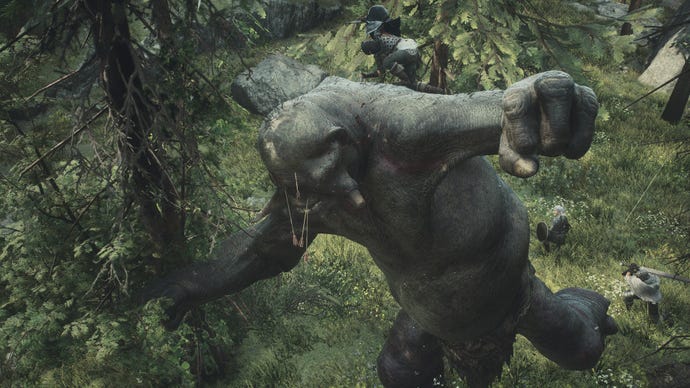
But what of those settings oddities? The first of these actually provides a glimmer of hope, even if it probably shouldn’t exist in the first place. Basically, the Low preset doesn’t actually set the lowest possible settings. Besides leaving several visual options on their own respective High toggles, it changes the ambient occlusion setting from SDFAO to SSAO, which in my testing ranslowerthan the High preset equivalent. Capcom, that’s not how Low settings work. The hope comes from there being greater opportunity to claim some frames back through further fine-tuning, though temper your expectations for this as well. With everything set to their true lowest qualities, my RTX 4060/Core i9-13900K PC averaged 74fps at 1080p, which was only 7fps faster than with the Low preset as it comes. CPU limitation remains an issue, too: with the RTX 3070 back on the Core i5-11600K setup, the difference between the Low preset and the manually-adjusted lowest settings was just 1fps in the latter’s favour.
Also not ideal: FSR 3 is here, but only as an upscaler, with its frame generation feature completely MIA. AMD’s frame gen might not be on par with that ofNvidia DLSS 3, but in a game that clearly struggles to reach truly high framerates through conventional means, it would have been worth a shot.
Image credit:Rock Paper Shotgun/Capcom
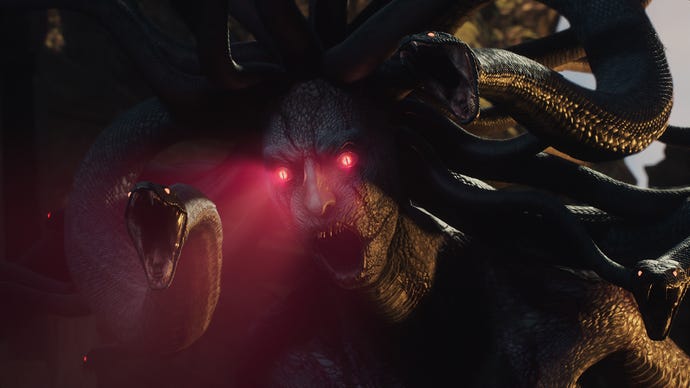
Whatisn’tworth bothering with right now, and likely for the foreseeable future, is attempting to play Dragon’s Dogma 2 on aSteam Deck. For one, the APUs powering both the standard andOLEDmodels simply don’t have the strength to contend with the dual issues of high graphics demand and brutal CPU dependency. Second, something is properly broken with the settings menu on the Deck. It defaults to enabling DLSS, despite the hardware lacking DLSS support, and then greys out the option to change it, so disabling DLSS and/or switching to FSR is impossible. Okay! Cool! The display resolution settings are scared and confused, too – 1280x720 is properly proportioned, but switch to the native 1280x800, and Dragon’s Dogma 2 simply squishes the images into the same 720p vertical height.
Not that an 800p resolution or functioning FSR would help, as rock-bottom quality settings only get the Steam Deck to 9-10fps. It’s a no-go, basically. Dragon’s Dogma 2 might be wonky on desktop PC, but at least it runs.
Budget gaming laptops are a better bet than the Deck as well, though still might not be enough. I tried an MSI Thin GF63, coming equipped with an RTX 4050 GPU and Intel’s Core i5-12450H, and it averaged a sort-of playable 27fps through minimum settings and DLSS on Performance mode. I still saw troughs as deep as 18fps, mind, while wandering through Vernworth’s courtyards.
Image credit:Rock Paper Shotgun/Capcom
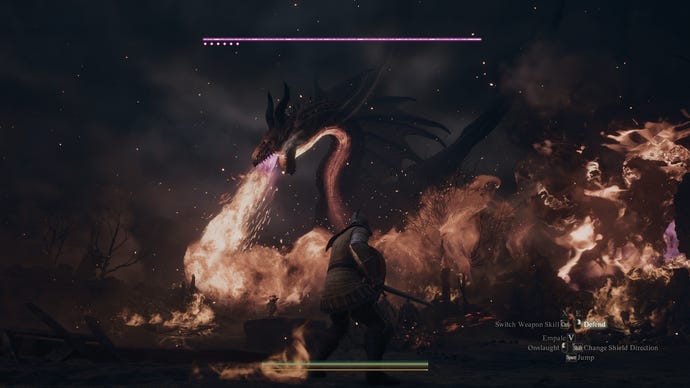
Dragons Dogma 2 best settings guide
Real talk? There’s probably nothing you can do to totally prevent the steepest FPS drops that occur within busy areas. I have, however, managed to scrape together a set of settings which at least prevents Dragons Dogma from plummeting into that sub-30fps danger zone as often.
It’s not a case of cutting every single quality setting, either, as some options have little to no effect on performance either way – meaning you can keep them turned up, and avoid hurting the visuals when you don’t need to.
To find out how each individual setting can help (or harm), I plugged in the RTX 4060 to my Core i9-13900K rig, loaded up Dragon’s Dogma 2 at 1080p, and tested how reducing each one changed the High preset’s 61fps. I appreciate the combination of a mid-range GPU with a silly-money, 24-core CPU is an unlikely one, but dammit, I need variance for this experiment to work, and it ain’t forthcoming on the Core i5-11600K.
1of2CaptionAttribution
1of2CaptionAttribution
1of2
1of2
1of2
CaptionAttribution


CaptionAttribution
Caption
Attribution
Dynamic resolution:As ever, I recommend you ignore dynamic resolution options. The sudden drop in sharpness is always far more offputting than permanently lowered settings, and upscaling is an altogether better use of rez-altering anyway,
FidelityFX Super Resolution 3:Without its frame generation capabilities, FSR 3 must rely on upscaling alone to boost performance. I got up to 64fps with it on Quality and 65fps on Balanced, which only look like small increases, but are still worth taking as they help smooth out FPS drops and the worse stutters.
DLSS Super Resolution:I got 64fps on Quality mode, with sharper image quality than FSR 3 provided. Use this if your GPU supports it.
DLSS Nvidia Reflex Low Latency:Not actually a graphics setting, but you may as well set this to On+Boost. It reduces input lag with no drawbacks.
Upscale sharpness:Leave this on its default value, 4.
Ray tracing:This is a tougher call than I initially thought. Enabling ray tracing does cost some FPS, but it makes Dragon’s Dogma 2 look considerably better, and since the RTX 4060’s average framerate only dropped to 53fps, it wasn’t exactly brought to its knees. That said, it did make those city/settlement performance drops even worse, while exacerbating the general stuttering problem. With regret, RT effects are therefore best left disabled.
1of2CaptionAttribution
1of2CaptionAttribution
1of2
1of2
1of2
CaptionAttribution


CaptionAttribution
Caption
Attribution
Ambient occlusion:Leave this on SDFAO. SSAO, despite coming under the Low preset’s purview, actually ran 1fps slower on average.
Anti-aliasing:It doesn’t hugely matter what you select here, as ideally you’ll be using DLSS or FSR 3, which include their own anti-aliasing. If you do want to go with fully native rendering, though, the default TAA offers the best balance of looks and performance. TAA+FXAA is ever-so-slightly sharper, but slower as well.
Mesh quality:This is worth dropping to Min. Although the 63fps I got with it is only a couple of frames faster, it’s hard to see the drop in quality, so you may as well take the extra performance.
Texture quality:This, on the other hand, you can cut. I settled on lowering from High (2GB) to Medium (0.25GB), performance rising to 63fps in the process.
Grass/tree quality:In yet more settings-based weirdness, the High preset sets foliage quality to Low. I tried it on High, and performance fell to 60fps, so I’d stick with Low.
Resource-intense effects quality:Even it it only got my RTX 4060 a single bonus frame per second, this setting can still be dropped from High to Low without spoiling much.
Shadow quality:Here’s the biggest non-upscaling setting of the bunch, dragging the RTX 4060 up to 64fps on Low. I think that’s fine – the lower-rez shadows don’t look too bad.
Shadow cache:This doesn’t affect performance one way or the other.
Contact shadows:Again, there wasn’t even a single FPS difference between having contact shadows enabled or disabled. Thus, enable them.
Motion blur:I’ll happily drop motion blur for free, though in this case it did grant an extra 1fps after disabling.
Bloom:No effect.
Depth of field:No effect here either.
Lens flare:Has an effect. Just kidding, no effect again.
Lens distortion:Also no effect, though I understand a lot of folk dislike the blurring effect of chromatic aberration, so feel free to disable it as a matter of taste.
Subsurface scattering:Nil effect, mon ami.
Motion quality:One last bit of that-makes-no-sense for the road: lowering motion quality also reduces performance! To the tune of 61fps on High to 59fps on Low, in my case.
Image credit:Rock Paper Shotgun/Capcom
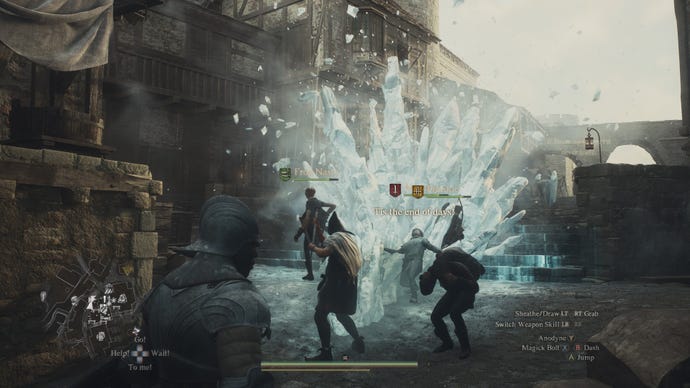
I’ll cop to this settings guide leaving a few potential framerate sources on the table, but then even with a game as tough to run as Dragon’s Dogma 2, the aim of these is never to make a game look ugly – it’s to make it run better while making as few visual compromises as possible. With that in mind, should you find yourself struggling, give these a try:
Averages-wise, this combination got my RTX 4060 rig up from 61fp to 66fps. No, that is not a big increase. But hidden within that average figure are several individual moments where the FPS drops weren’t as severe, and the stuttering not quite as frequent, as they were with the High preset. As such, itfeltsomewhat smoother, even if there were other, faster-running sections where the difference was less stark.
And yet, I’m painfully aware that the secret ingredient in this settings recipe is, essentially, upgrading to a much more powerful Core i9 CPU. Lesser chips may only be able to toil to even smaller gains, barring some kind of borderline miraculous performance patch from Capcom.